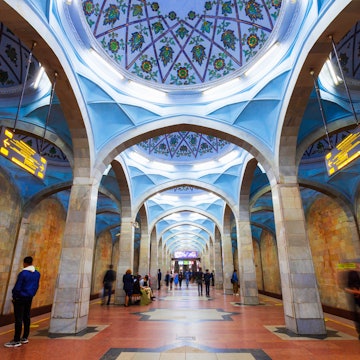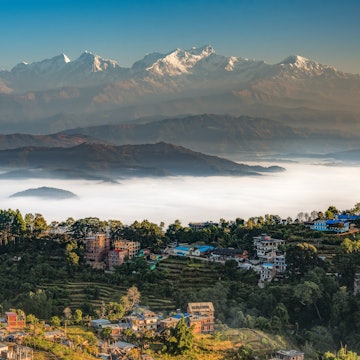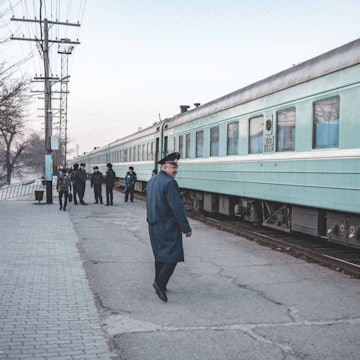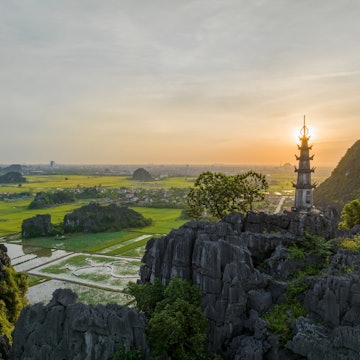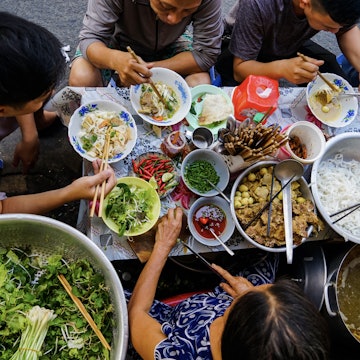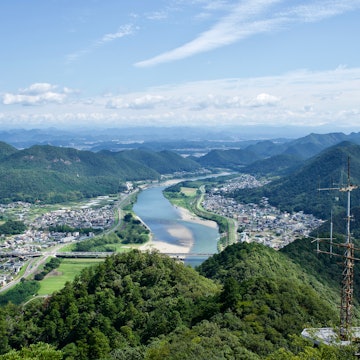
Discover the best neighborhoods to visit in Beijing

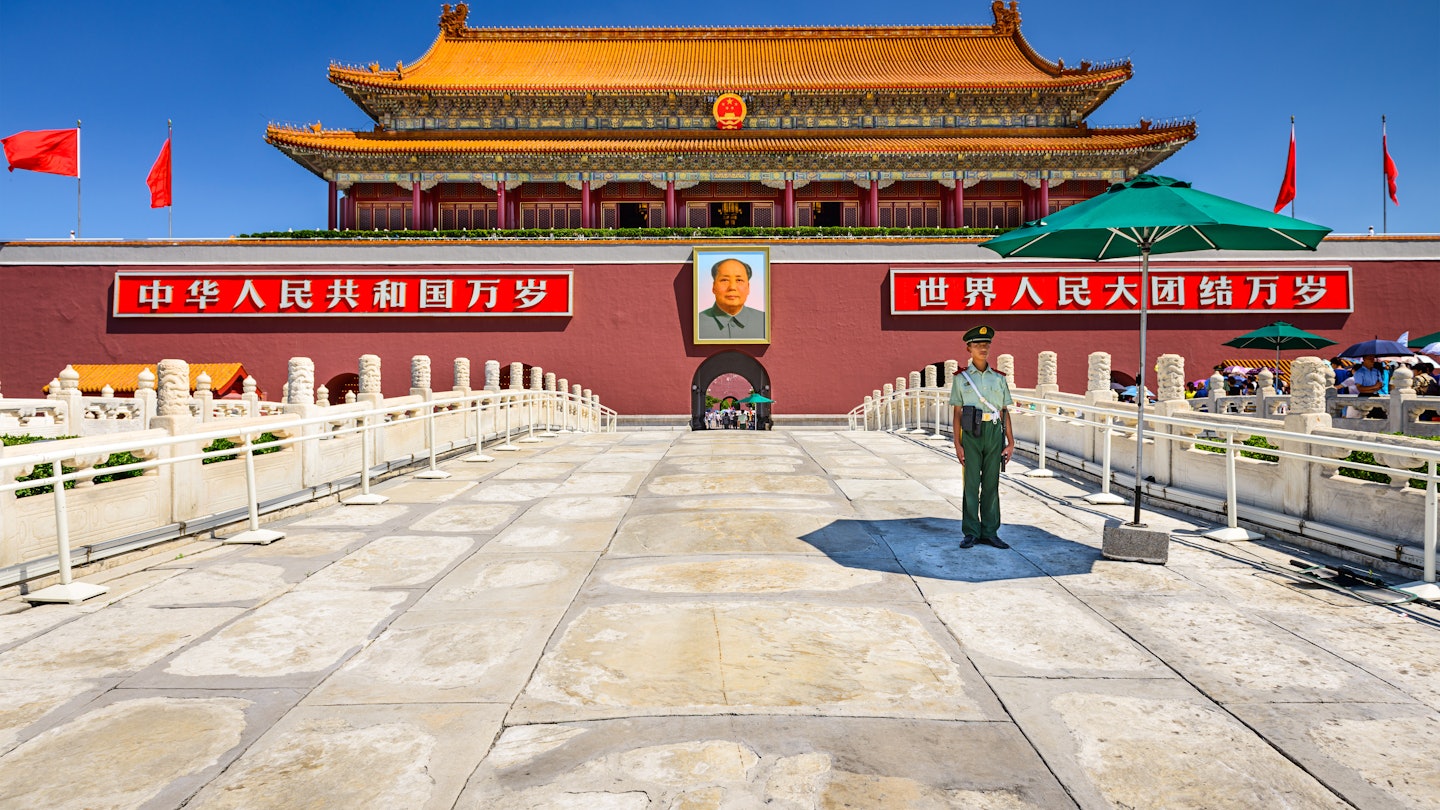
Beijing is full of fascinating neighborhoods to explore. Sean Pavone/Shutterstock
Glitzy new skyscrapers may dominate the skyline of Beijing – but at street level, China’s capital remains remarkably down-to-earth. The laughter of beer-drinking Beijing citizens overflows from neighborhood corner restaurants, while in the streets, thousands of shared bicycles cruise unhurriedly alongside legions of electric cars.
One of Asia’s great crossroads, Beijing was appointed capital in 1272, when Kublai Khan ruled the roost. Yet the Mongols were not the last group from beyond the Great Wall to lay claim to the city: as the centuries flowed by, Han Chinese bureaucrats, Muslim traders, Manchurian rulers, Mongolian horsemen, Tibetan monks and Mao’s Red Guards all came and went.
Each regime left its own indelible mark. You can wander back to the Yuan dynasty in the hutong (narrow alleyways) of Gulou, sample the imperial grandeur of the Ming dynasty in the Forbidden City, glimpse the optimism of modern China in Chaoyang and Sanlitun, and feel the grand ambition of China’s Communist government – as well as its dark side – in Tiananmen Square.
While it’s easy to explore the city using public transport, most travelers pick accommodation somewhere close to the central hub formed by Dongcheng, Xicheng and Chaoyang, where you’ll find most of the city’s historic sights, museums, temples and tourist-friendly amenities.
Whether you’re here for a fleeting visit to the Forbidden City or a longer trip to soak up the capital’s culture, character and cuisine, here are the best neighborhoods in Beijing.

1. Forbidden City & Dongcheng Central
Best for the top historical sights
At the heart of the Middle Kingdom, the Forbidden City is where the power of China’s great leaders endures. The ghosts of emperors past haunt the elegant, ornate precincts of the imperial compound, while Chairman Mao slumbers in his Tiananmen Square mausoleum, surrounded by museums and bombastic Communist-era monuments.
From grand parks to monolithic museums, Beijing’s densest array of big sights gives way toward the east to the shopping malls and hotels of Wangfujing; to the south, the sleepy former Legation Quarter is where the world beyond China’s borders left its mark on the capital, though the district is presently closed to the public.
Remarkably, central Beijing retains its historic, low-slung layout, a fantastical masterwork of feng shui planning and divine order. You’ll understand the city’s grand design once you clamber up the slopes of Jingshan Park and drink in the astonishing scale and symmetry of the city's Central Axis from above.
Ideally, you'll dedicate one or two days to the main sights, including the increasingly ambitious exhibitions at the National Art Museum of China. But do consider getting off the beaten path at lesser-known museums and parks, such as the Manchurian-era Shouhuang Palace at Jingshan Park and the Ancient Observatory.
Where to eat: Look beyond the food stalls selling unusual things on skewers, and head instead to Zhongshan Park, where the historic Laijin Yuxuan Teahouse serves jasmine tea and famous pork-and-mustard-greens steamed buns. For cutting-edge modern Chinese gastronomy, try Fu Chun Ju at the PuXuan Hotel, or the local branch of respected Hong Kong chain Lei Garden, which draws in crowds with its divine dim sum.
Where to stay: If you’re on a budget, Peking Station Hostel is one of the only hostels in the capital, though it often books out months in advance. For a hutong setting without the posh price tag, try the Happy Dragon Alley Hotel. Moving upmarket, Peking Yard Boutique Hotel has a handy location near the Zhangzizhong Lu subway, plus lovely tatami and loft-style rooms.
For stylish luxury, the rooms at the PuXuan Hotel are a masterclass of taste and design, backed up by Michelin-starred restaurants. Other glam choices include the elegant, boutique Unified Courtyard Hotel, in the former home of imperial court musicians; and the palatial Mandarin Oriental Wangfujing, with some of the best views of the Forbidden City.

2. Drum Tower & Dongcheng North
Best for old Beijing atmosphere
Bookended by the magnificent sights of the 13th-century Drum Tower and the 15th-century Bell Tower, and the gorgeous 17th-century architecture of the Tibetan Buddhist Lama Temple, this is Beijing’s buzziest district of historical hutong alleyways. Casually referred to as Gulou, in homage to the Drum Tower, this area is where you can encounter Beijing on a refreshingly human scale.
Here, you can wander from the touristy strip of Nanluogu Xiang into a locals’ Beijing of dumpling shops, tea houses and local stores that offer a fading snapshot of civilian life in the imperial city before the Cultural Revolution. Beijingers play cards or xiangqi (Chinese chess) by the roadside, while discreet cocktail bars and trendy cafes slot between grey-brick residences, alongside boutique hotels and hostels.
After dark, Beiluogu Xiang and adjacent Baochao Hutong are good spots to have a drink and listen to live music. Further east, the raucous restaurant strip known as Ghost Street serves spicy crayfish, beer and baijiu (traditional grain liquor) until the sun comes up. Consider delving deeper into hutong life with a cycle tour or a dinner tour based on Mongolian barbecue or Beijing noodles.
Where to eat: This is a great neighborhood to seek out local treats. Close to the Drum Tower, hit 69 Fangzhuanchang Zhajiangmian for signature zhajiang noodles, Xian Lao Man for dumplings, or Yaoji Chaogan for excellent steamed buns and chaogan (liver and intestine stew). Vegetarians should track down Buddhist chef Pan Jianjun’s King's Joy on Wudaoying Hutong.
For an evening meal with a buzz, eat your way down Ghost Street, jammed with over 100 restaurants. Hu Da is wildly popular for its Sichuan-style crayfish; for something less spicy, try the Beijing-style shuan yangrou (mutton hotpot) at Fu De Yu Hotpot, or grill your own lamb kebabs at Henjiu Yiqian Yangrou Chuan.
Where to stay: For inexpensive accommodation, long-established Peking International Youth Hostel is cute and photogenic and right in the heart of the Nanluogu Xiang action. Another reliable budget option is Read & Rest Hotel, with a minimalist modern decor and lots of places to eat nearby. A garden sanctuary near the Drum Tower, the Orchid is Beijing’s best boutique hotel, making the most of its dreamy hutong setting.
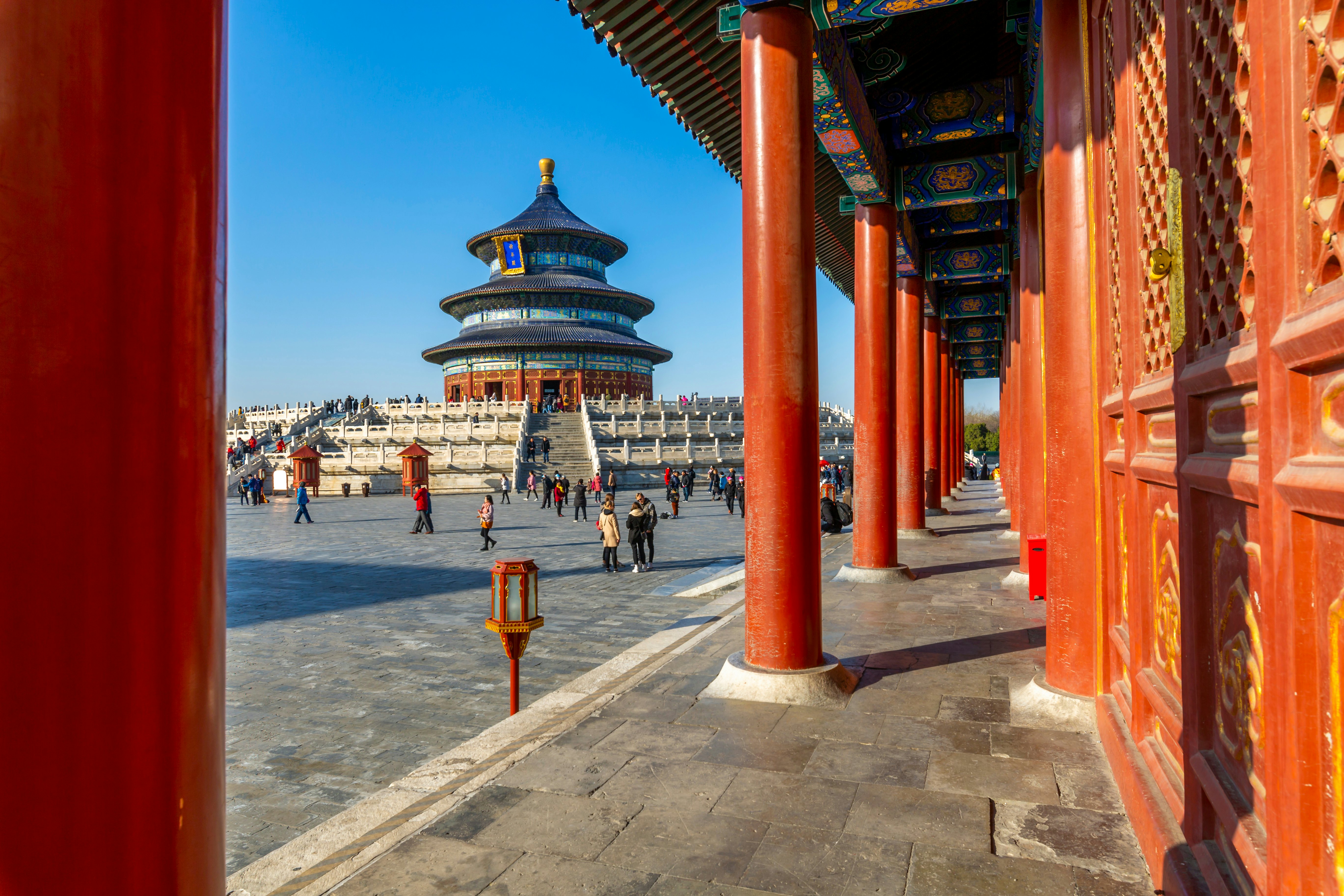
3. Temple of Heaven Park & Dongcheng South
Best for landmark sights and scenery
A pilgrimage to the Temple of Heaven is as mandatory for tourists today as it was for emperors and their entourages coming here during the winter solstice in centuries past. During the Ming and Qing dynasties, the grounds were off limits to all but the emperor and his ministers – and an air of exclusive refinement still obtains today at the temple and in its surrounding park.
You’ll find enticing remnants of Beijing's city walls north of the temple, where a walking route extends eastwards for 1.2km (0.7 miles). Amateur historians should head to the new home of the imperial archives, once stored next to the Forbidden City. Dotted around the district are more fascinating museums, plus the faux-historical shopping avenue of Qianmen Dajie, which conveys tourists along Beijing’s central spine.
Where to eat: The roast Peking duck in this area is superb. Landmark spots to try it include Bianyifang Roast Duck, where birds are roasted using antique closed ovens; and the tourist-friendly local branch of beloved chain Quanjude Roast Duck. For a change from duck, try Dōuyīchù for tasty shaomai – light, moist steamed dumplings – or Mending Roubing for “doornail meat pie,” reputedly one of Empress Dowager Cixi’s favorite treats.
Where to stay: This part of town is short on quality places to stay. In a revamped hutong off the main Qianmen shopping strip, Emperor Hotel is a reasonable proposition, with boutique-style, all-white rooms and a huge rooftop deck with an open-air pool. Within striking distance of the Temple of Heaven Park, the luxurious New World Beijing Hotel is crowned by a stylish rooftop bar.
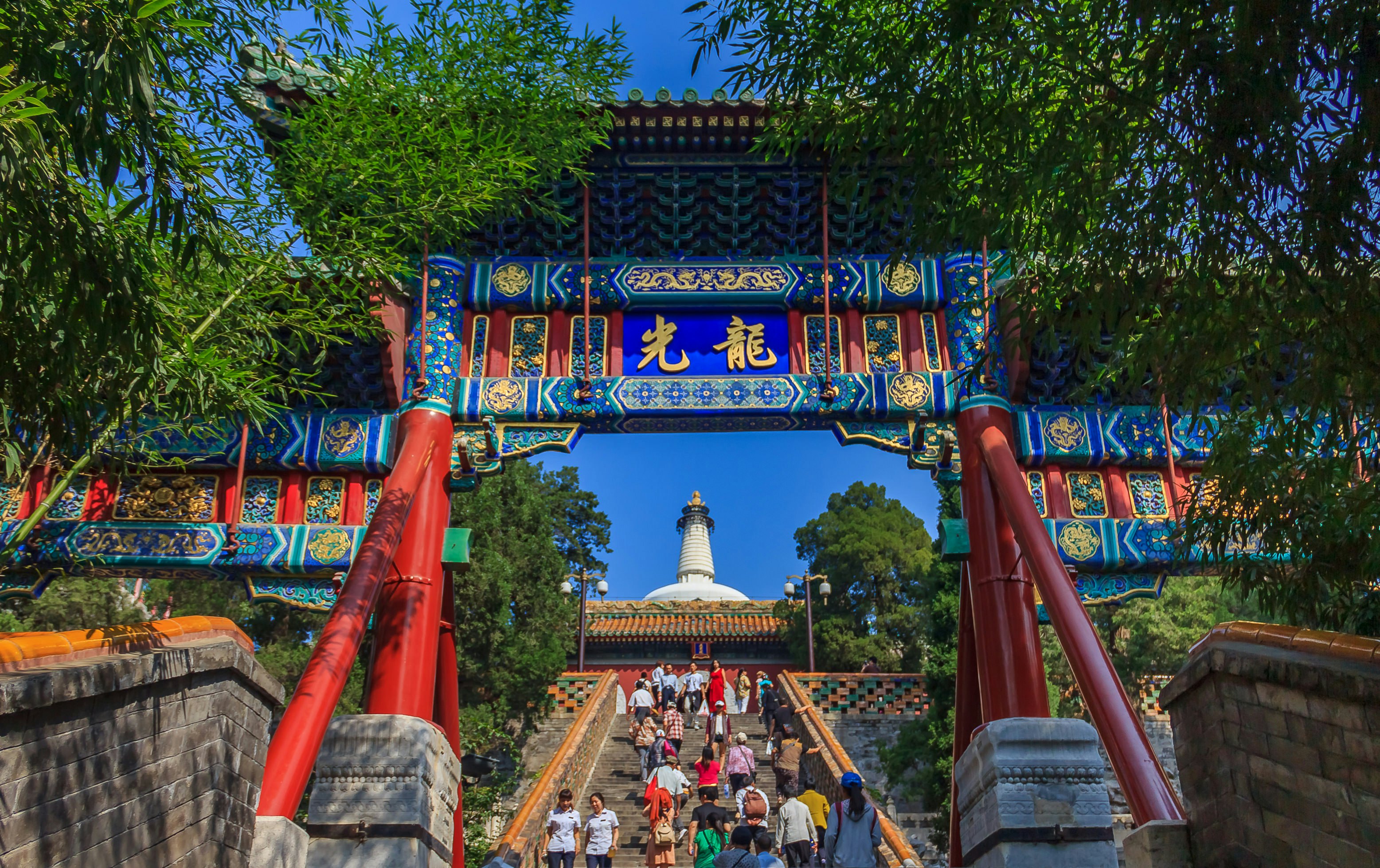
4. Beihai Park & Xicheng North
Best for water views and local vibes
On the shoulder of the Forbidden City, the willow-lined waterways of Beihai Park and the trio of lakes at Shichahai – Qianhai, Houhai and Xihai – are where Beijingers come to connect with nature in a city with neither river nor coastline. Excavated during the Yuan dynasty, these lakes served both as reservoirs for the city's drinking water and as scenic gardens for the imperial family.
Start exploring in Beihai Park, with its historic buildings (including the remains of Kublai Khan’s palace), and take in sights such as the Capital Museum and the gleaming white chorten (Tibetan Buddhist stupa) at the Miaoying Temple. An antique warren of hutong flows from the lakes to the now vanished city wall, where coal once entered the capital on camel trains.
Venture into the hutong north of Fuchengmennei Dajie for a glimpse of old Beijing. Temples rise majestically above gray-tiled rooftops; hole-in-the-wall bakeries sell sesame shaobing bread; and conversations unfold in gruff Beijinghua, the local dialect. After dark, Houhai and Qianhai Lakes near Silver Ingot Bridge morph into a neon-lit nightlife zone.
Where to eat: Street food treats abound near Beihai Park. Seek out Hui Muslim food at Ya’er Liji near Houhai Lake, or try beef-and-leek pies at Royal Palace Crisp Beef Pies. Then there’s Huguosi Snacks – a time capsule of a canteen, dishing up traditional sweet and savory snacks – and Qingfeng Steamed Dumpling Shop, on the southern side of Jade Islet inside Beihai Park.
For a slap-up dinner, enjoy a Hunan-style spice fest at Yufunan, or feast on Beijing–style lamb hotpot next to the Shichahai subway station at Mumen Jia Shuanrou. For a meal with atmosphere, join locals chowing down at Liu Quan Ju, an old-timer that's been around since 1567.
Where to stay: There are several tasteful choices here, including the stylish, light-filled Pagoda Light Hotel, blending boutique design with Chinese courtyard decor (take your pick from rooms or dorms). In its own private compound, the trendy lakeside Blossom House Houhai Beijing has 80 designer guest rooms with open-plan bathrooms.
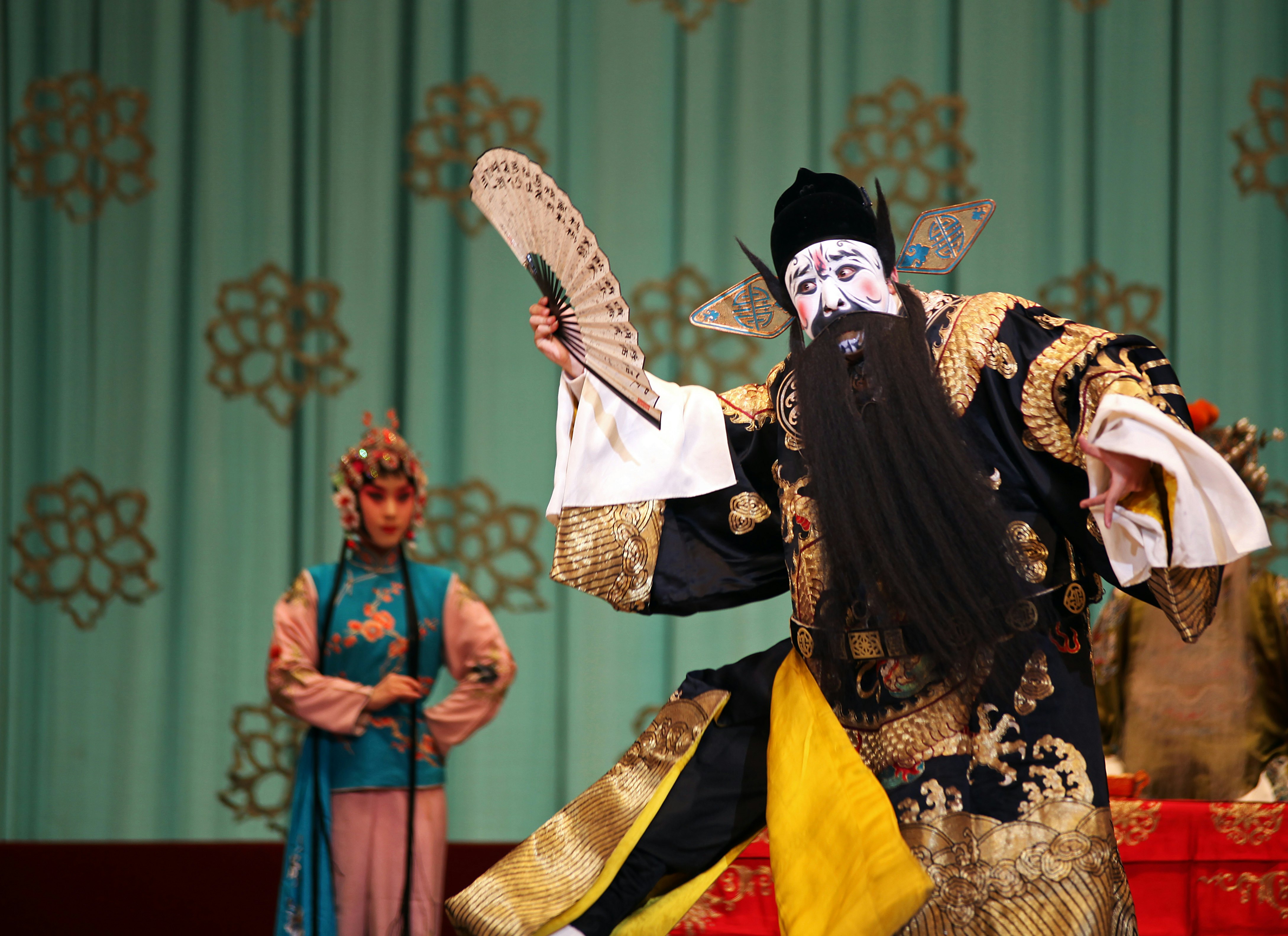
5. Dashilar & Xicheng South
Best for a Peking opera and a taste of the “Outer City”
Beijing was originally divided into an Inner City and Outer City, and it was at Qianmen – the Front Gate – that these two worlds met. Just beyond Qianmen was the busy commercial district of Dashilar, filled with craftspeople, peddlers and an endless procession of travelers.
Today, the shopping streets of Dashilar and nearby Liulichang are the best areas for browsing traditional Chinese goods such as silk and tea. Further afield are the city’s Ancient Architecture Museum and the Niu Jie Mosque. Delve into the smaller alleys flowing west from Meishi Jie for authentic local vibes.
A hutong tour with Beijing Postcards is a great way to plug into the district’s rich past. Also make time for a performance of traditional Peking opera at a classic Beijing venue such as Huguang Guild Hall, the Zhengyici Theater or Tianqiao Performing Arts Center.
Where to eat: There’s more roast duck on offer on Dashilar’s menus, including at the huge flagship branch of Quanjude Roast Duck Hepingmen. Deyuan Roast Duck is a good choice for travelers watching their budgets (they also serve roast lamb). Noodle fans should track down Wei Dada Biangbiang Mian on Dashilar Xijie – purveyors of spicy, thick Shaanxi noodles.
Where to stay: For local vibes, clean and convenient Immersing Hotel has its own bar-restaurant that opens out onto pedestrian Dashilan Xijie. Japanese design brand Muji has a stylish Beijing hotel that’s very handy for Tiananmen Square. Orange Hotel (Dashilan) is another place offering snazzy midrange rooms within walking distance of Tiananmen.
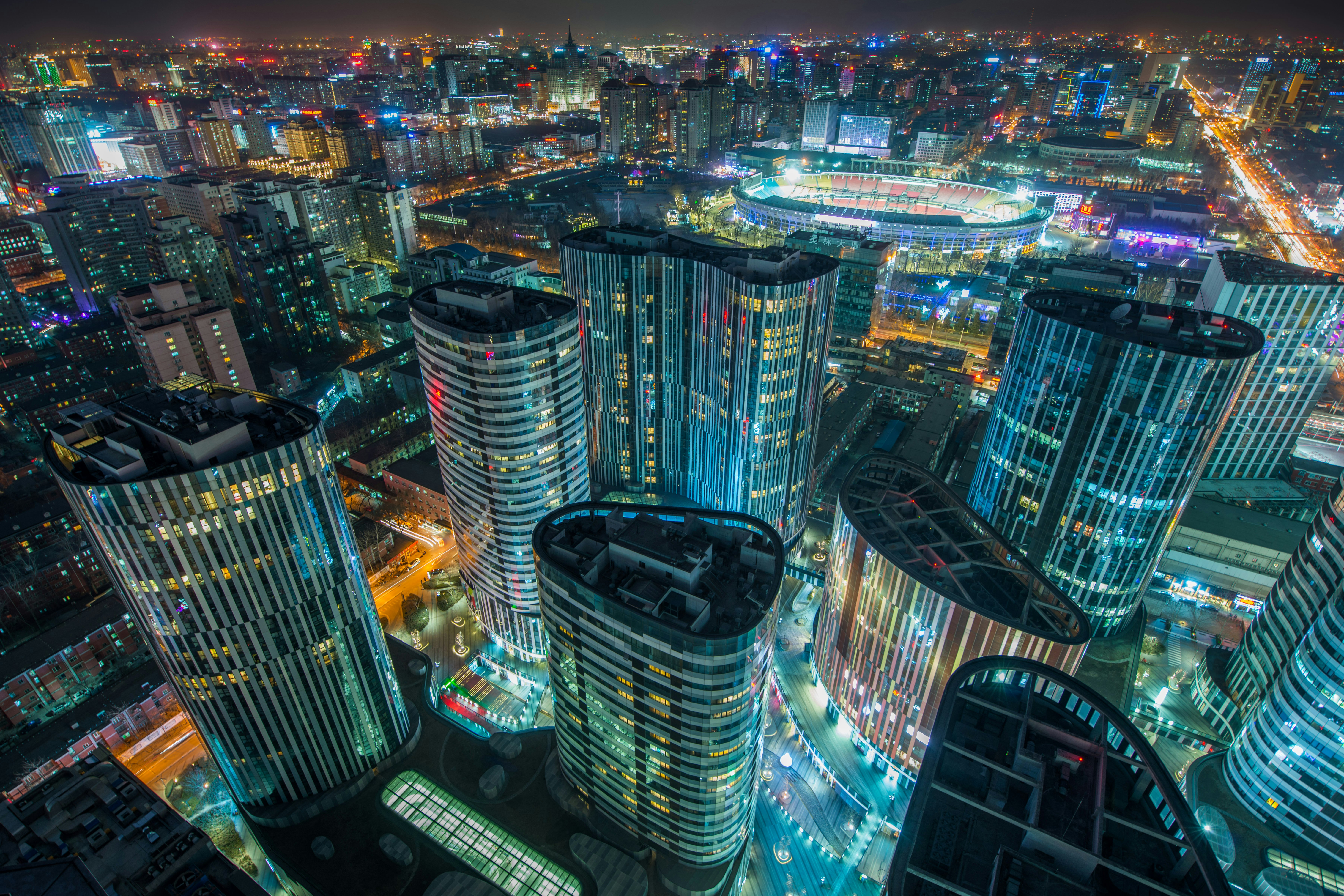
6. Sanlitun & Chaoyang
Best for eating, nightlife and futuristic vibes
Modern Beijing struts its stuff in Sanlitun, the premier destination for shopping, posing and partying until dawn. Ground zero is Taikoo Li, a trendy open-air retail and restaurant zone that buzzes with the capital’s fashionistas day and night. If you want to get a sense of how this country envisions its future or have your meal served by a robot, this is the place to come.
Sanlitun is a part of Chaoyang, a district low on sights but not lacking in luxury hotels, gourmet eats, audacious architecture and venues that host a surprising underground music scene. Sights worth seeking out include the Dongyue Temple, the curio-filled Panjiayuan Market and the 798 Art District – Beijing’s dynamic hub of contemporary art. Further afield are Beijing's Olympic area and the uber-popular Universal Resort Beijing.
Chaoyang is also host to Beijing’s central business district, 2.5km (1.6 miles) south of Sanlitun, where competing neon-lit skyscrapers climb into the clouds, including 528m-tall (1732ft-tall) China Zun, the 10th-tallest building in the world. An improvised, self-guided architecture tour here is one of the best free things to do in Beijing.
Where to eat: Start the Sanlitun foodie journey at Chua Lam’s Dim Sum for hawthorn-barbecued pork buns and crystal shrimp dumplings. For tongue-tingling Sichuan dishes, there’s Meizhou Dongpo Jiulou. Other top spots to sample spice include Baron Rozi Uyghur Restaurant, good for grilled lamb skewers and dapanji (spicy chicken stew); and Haidilao, loved for its spicy hotpots and hand-pulled noodles.
For a sophisticated, beautifully presented dinner, Yunnanese eatery In & Out will take your taste buds to China’s southwest, while Michelin-starred Country Kitchen at the Rosewood Hotel takes roast lamb and Peking duck to new levels. In the China World Mall, Crystal Jade is a stylish choice for dim sum, while sleek Sheng Yong Xing roasts its Peking duck over jujube wood.
Where to stay: Supremely comfy beds beckon at affordable Holiday Inn Express Dongzhimen, where rooms have more personality than at most chain hotels. Millennials favor Jen Beijing for its co-working space, craft-beer brewpub and giant gym.
For those with deeper pockets, there’s trendy Opposite House, a haunt for celebs and well-heeled media types, and the Rosewood Hotel, which seduces guests with rooms full of designer furniture and arty curios. High rollers also rate the Hotel Eclat, a fantastical neverland of a hotel with sleek designer rooms, and the towering Park Hyatt, famed for its 66th-floor China Grill.
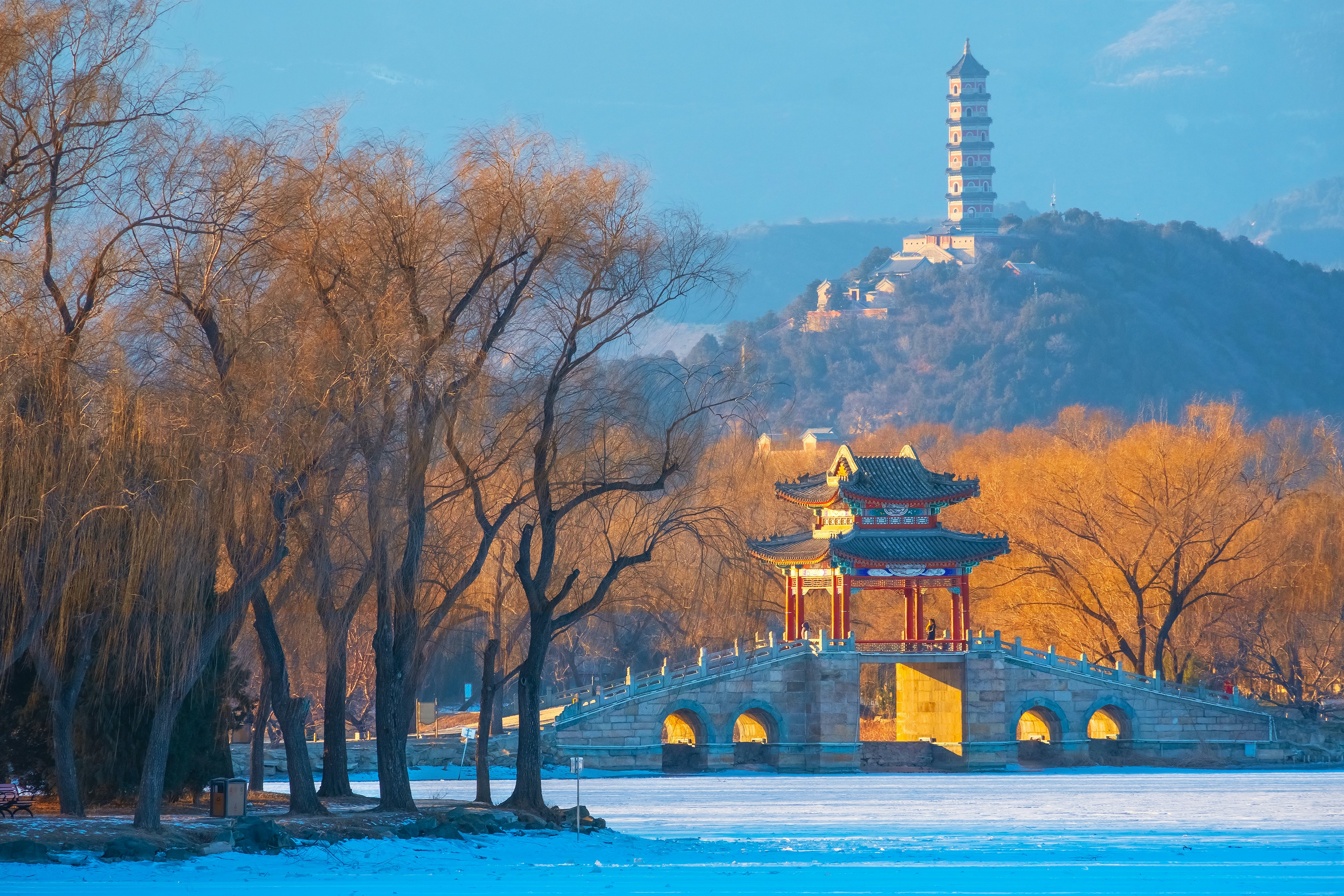
7. The Summer Palace & Haidian
Best for a glimpse of vanished Beijing
The sprawling Haidian district stretches as far as the Western Hills, which for centuries have offered an escape from Beijing’s dust, heat and noise. The Summer Palace is the most noteworthy survivor of a great swath of regal real estate that once encompassed the Old Summer Palace (Yuanmingyuan Park) and the temple-strewn peaks of the Fragrant Hills – before the site was ransacked by the French and British at the end of the Second Opium War.
Today, Haidian is best known for its universities, whose graduates feed the talent pool for Zhongguancun, China’s Silicon Valley. A thriving incubation district of start-ups, tech companies and innovation backed by government funding, Zhongguancun sits at the cutting edge of the AI-assisted technologies of the future, spurring both envy and anxiety beyond China’s borders.
Where to eat: At the east entrance to the Summer Palace, popular Qingfeng Steamed Dumplings is good for a quick meal, while fabulous Yunnanese food can be found at Golden Peacock and at Yunhai Yao by the Xiyuan subway station.
Where to stay: Zhongguancun has plenty of comfortable but unexciting chain hotels from the likes of Holiday Inn, Mercure and Crowne Plaza. With a bigger budget, the Lakeview Hotel has a convenient location close to Yuanmingyuan Park and spacious rooms that do indeed offer lake views. If money is no object, the gorgeous Aman Summer Palace recreates the luxurious experience of imperial life, right next to the Summer Palace.
This article was adapted from Lonely Planet’s China guidebook, published August 2025.






